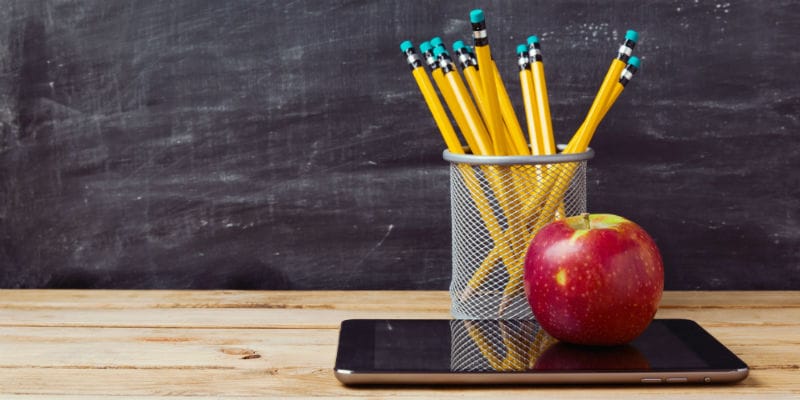3 subtle shifts to boost blended performance
October 31, 2018 |
October 31, 2018 |
 Implementing innovative ideas in an established, bureaucratic system of education is not always easy and almost never happens seamlessly. As someone who helps traditional schools implement blended models, I constantly see the tension between existing structures or norms and innovative concepts. Many schools see the benefits of combining online learning with face-to-face instruction and want to implement more personalized and competency-based practices, but they do not have the tools to implement these practices with fidelity while also complying with the more traditional requirements mandated by their district, diocese, state, and/or funder.
Implementing innovative ideas in an established, bureaucratic system of education is not always easy and almost never happens seamlessly. As someone who helps traditional schools implement blended models, I constantly see the tension between existing structures or norms and innovative concepts. Many schools see the benefits of combining online learning with face-to-face instruction and want to implement more personalized and competency-based practices, but they do not have the tools to implement these practices with fidelity while also complying with the more traditional requirements mandated by their district, diocese, state, and/or funder.
In an ideal world, policies and widespread practices would change to allow for emerging models to function optimally—but policies are slow to change, and I predict broad-scale change is still a long way off. Having said that, there are smaller changes that can take place at the school, district, or network level that allow students and teachers to reap the benefits of blended models even within a more traditional system. Here are three changes that I encourage every school to make in order to maximize the impact of their blended-learning program.
A letter grade system typically requires that all students complete the same assignments and receive a numerical score on each of them. In blended classrooms, however, students may master different objectives or choose different ways to display their learning. This presents challenges for a typical “letter grade” system because it is difficult to compare students in this somewhat limited form when the variations in their learning paths are more complex.
In a traditional classroom where all students are expected to master the same standards in the same way at the same time, standards-based grading is not particularly helpful. In a blended classroom where students may be mastering different standards at different times or in different ways, however, standards-based grading allows teachers, parents, and students to see exactly which concepts and skills each student has already mastered and still needs to master, and it eliminates the challenge of comparing students to one another or measuring them against an arbitrary set of skills to determine a letter grade.
Fortunately, many schools and districts are beginning to adopt standards-based grading practices. This kind of grading can be time-consuming and uncomfortable for teachers at first, but it ultimately allows much more insight into what a student has learned, and still needs to learn, for all parties involved.
Student requirements are typically focused on seat time. Competency-based systems of education, however, focus on the skills a student has mastered, regardless of the amount of time it takes for a student to master them. To start moving toward a competency-based approach, there are small steps that schools can take to focus more on skills mastered rather than seat time.
For example, instead of requiring students to spend 45 minutes per week engaged in online instruction, schools can instead require that students pass two lessons per week in their online program. The latter gives students an incentive to work hard and work smart to master concepts rather than passively go through online lessons to meet an arbitrary requirement. Similarly, schools can build “flex time” into their schedules, which are blocks of time in which students can work to master different skills across subjects rather than being held to a specific lesson. This allows students to progress upon mastery and focus their time and energy on the skills they still need to improve to demonstrate full understanding.
Finally, schools that are still held accountable by high-stakes tests may be tempted to standardize learning goals for all students. If all students need to demonstrate mastery of a specific set of skills by the end of the year, then the goal is for all students to learn those skills, right? Yes and no.
Schools can have overall learning goals for the class while still helping students set individualized learning goals that help them understand what they each need to do to improve or achieve mastery. Rather than setting a single standardized goal for each student, teachers can work with students to identify which concepts or skills they need to work on in order to achieve the desired level of mastery, and what behaviors the student will need to undertake to get there. This might mean that one student has a goal of improving reading comprehension and decides to complete two extra grade-level Newsela articles with quizzes every week, while another student has a goal of mastering the spelling and sounds of words and chooses to complete extra phonics practice every week.
These small changes will certainly not solve all of the discrepancies between the traditional model and blended models, but they will help to make the integration of these two systems more smooth. Instead of waiting on national policies to institute broad-scale change, we must make these subtle shifts to ensure blended programs serve all students within the current system.
Learn about the work our network of schools is doing around blended learning here.
Are you practicing blended learning? Share your story by creating a profile of your classroom, school, or district in the BLU Directory.
Elizabeth Anthony leads blended-learning implementations in K–12 Catholic schools as the blended-learning coordinator for the Alliance for Catholic Education (ACE).
Leave a Reply